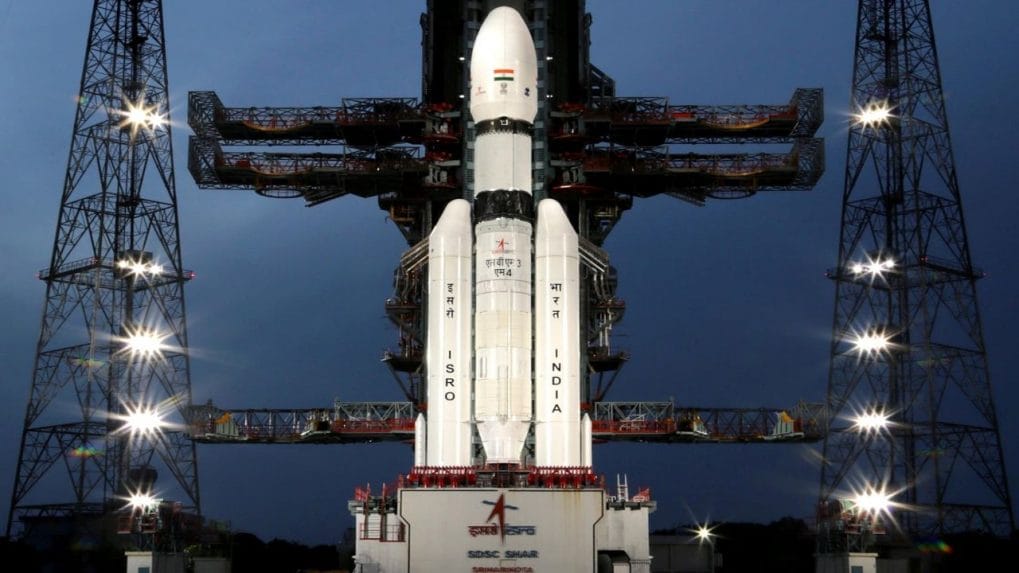
19-May-2025 12:00 PM
EOS-09 and Chandrayaan-5: ISRO’s Next Leap in Space Exploration
India’s Space Journey Continues
India’s space agency, the Indian Space Research Organisation (ISRO), is preparing for a significant double milestone. On May 18, 2025, it will launch its 101st mission—PSLV-C61—carrying a powerful Earth observation satellite, EOS-09, from the Satish Dhawan Space Centre (SDSC), Sriharikota.
This mission isn’t just about another satellite—it reflects India’s broader vision of space-powered development and global scientific collaboration.
About EOS-09: Eyes in the Sky
What is EOS-09?
EOS-09 is an advanced Earth Observation Satellite designed to strengthen India’s capacity in:
Border surveillance
Disaster management
Agricultural monitoring
Urban planning
The satellite is equipped with C-band Synthetic Aperture Radar (SAR). This technology allows it to capture high-resolution images of the Earth’s surface, even during night and cloudy conditions—making it a game-changer for real-time, all-weather imaging.
Whether it's tracking floods, mapping damaged areas after a cyclone, or monitoring changes in agriculture or infrastructure, EOS-09 will bring clarity from space, regardless of environmental challenges.
Chandrayaan-5 / LUPEX: India-Japan's Lunar Ambition
International Collaboration for the Moon
While EOS-09 focuses on Earth, ISRO is also looking beyond—toward the Moon’s south pole, where hidden resources and mysteries await. The Chandrayaan-5 / LUPEX mission (Lunar Polar Exploration) is being jointly developed by ISRO and Japan Aerospace Exploration Agency (JAXA).
This mission recently hit a key milestone with the 3rd Technical Interface Meeting (TIM-3) held on May 13–14, 2025, in Bengaluru.
Building on Past Successes
India’s lunar missions have grown progressively:
Chandrayaan-1: Discovered water molecules on the Moon.
Chandrayaan-2: Carried an orbiter and attempted a soft landing.
Chandrayaan-3: Achieved a successful lunar landing with a working rover.
Chandrayaan-4: (Upcoming) Targets lunar sample return.
Chandrayaan-5 / LUPEX: Aims to explore lunar water ice in Permanently Shadowed Regions (PSRs).
Key Features of Chandrayaan-5 / LUPEX
Launch Vehicle: Japan’s H3-24L rocket.
Lander: Developed by ISRO.
Rover: Developed by Japan’s Mitsubishi Heavy Industries (MHI).
Scientific Payloads: A collaborative effort involving ISRO, JAXA, ESA, and NASA.
This mission will explore volatile elements like water ice in the Moon’s southern regions, aiming to understand lunar resources and assess the potential for future human bases on the Moon.
Conclusion: India’s Expanding Space Horizon
With EOS-09, India is strengthening its Earth observation and disaster response capabilities. At the same time, Chandrayaan-5 / LUPEX underscores how international cooperation can unlock new frontiers in lunar science. Both missions reflect ISRO’s vision of space for development, sustainability, and exploration.
MCQs: Test Your Knowledge
1. What is the primary function of EOS-09?
A. Studying outer space
B. Detecting extraterrestrial life
C. Earth observation using radar imaging
D. Monitoring satellite collisions
Answer: C. Earth observation using radar imaging
2. What technology does EOS-09 use to image the Earth?
A. Infrared sensors
B. Optical telescopes
C. C-band Synthetic Aperture Radar (SAR)
D. Magnetic resonance imaging
Answer: C. C-band Synthetic Aperture Radar (SAR)
3. Which country is partnering with India on the Chandrayaan-5 / LUPEX mission?
A. Russia
B. France
C. Japan
D. USA
Answer: C. Japan
4. What is the goal of Chandrayaan-5 / LUPEX?
A. To return samples from Mars
B. To map Earth’s oceans
C. To study lunar volatiles at the south pole
D. To launch commercial satellites
Answer: C. To study lunar volatiles at the south pole
5. Who is developing the rover for the LUPEX mission?
A. ISRO
B. ESA
C. NASA
D. MHI (Japan)
Answer: D. MHI (Japan)